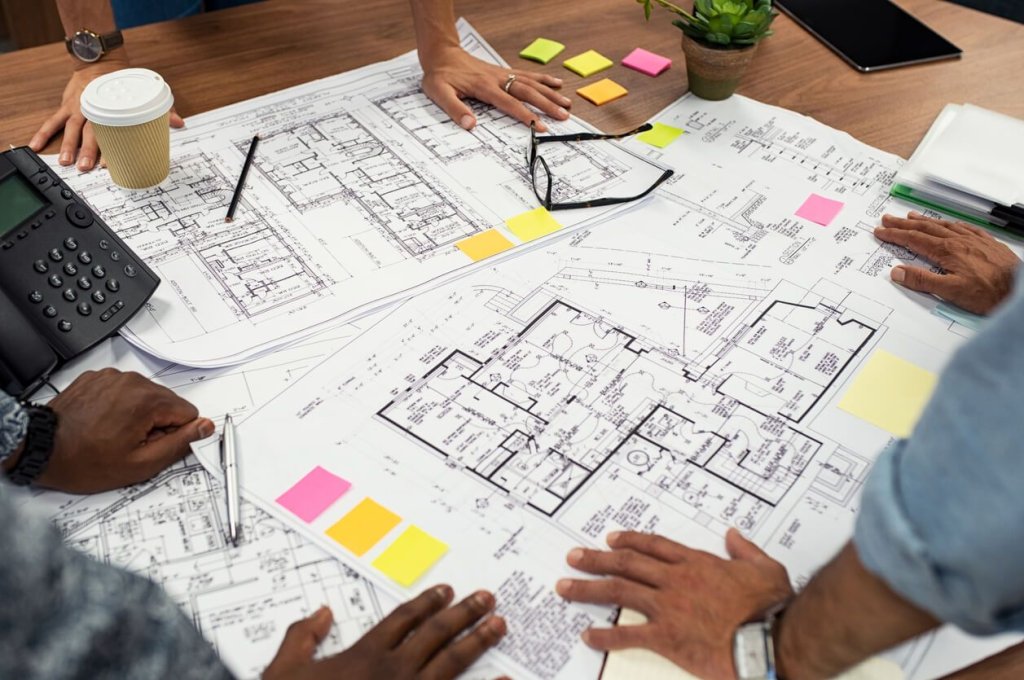Pre-Task Planning Safety Talk
Fast work doesn’t always equal efficient work—some jobs take time to do the right way, especially in construction. With all the complexities of a construction project, tasks should be carefully planned out so employees can work both safely and efficiently.
What is pre-task planning?
In construction, pre-task planning is the practice of holding one or more meetings to discuss a project in detail before any work begins onsite. These meetings can involve discussing the work schedule, determining the number of contractors needed, estimating costs, planning materials, identifying potential jobsite hazards, and other agenda items.
Pre-task planning is an essential part of the construction process. Typically projects are made up of multiple different moving pieces that are worked on simultaneously. To stay efficient, you'll need to plan ahead.
Poor planning can result in wasted time, errors, and safety hazards.
The next steps: Review, prepare and execute
After all the necessary stakeholders plan out a job in detail, the next step is to make sure both workers and the jobsite are properly prepared. Review the tasks outlined in the project plan, and assign them out accordingly. Each employee need the proper qualifications, training, and licenses to perform their assigned tasks. Construction task management software can help you manage this process.
Another part of preparing for a job is making sure you have all the needed supplies. Gather all the equipment, tools and, and materials outlined in the project plan. You should also make sure you've secured the necessary permits.
When work preplanned and assets are prepared ahead, your projects will run much more smoothly.
What to do when work plans need to be adjusted
Despite careful planning, unexpected delays and other issues do happen on the job. There will be times that project plans have to be adjusted.
A variety of problems may arise, such as:
Mistakes
Rain delays
Snow delays
Storm delays
Missing data
Conflicts
Equipment breakdown
A sick or absent employee
An important step in planning is preparing for potential changes. When you are proactive, you can cut down on wasted time trying to come up with a solution in the moment.
Have a backup plan can immediately be implemented in case of an emergency. For example, to prepare for potential weather delays, you can determine that you will hire additional employees that can help pick up the pace when work resumes. If a piece of equipment breaks, you can prepare the name and number of a rental business where you can find a fast replacement.
Unexpected issues may still set back your timeline, but having a backup plan in place will reduce stress and help you resume progress as fast as possible.

Why pre-task plan?
Pre-task planning takes time and energy before starting a project, but it's worth it in the long run.
Here are some reasons why pre-task planning is essential in construction:
1. Weather can cause delays
Weather is a big factor on many construction sites. For example, lightning is a common safety hazard. When grade work or excavation is needed, rain can also create muddy conditions.
Often work can still go on in bad weather, but you will need to make sure you can still work safely. If rain is in the forecast, changes will need to be made. The supervisor of the job should have a plan set out for common weather conditions like rain. You may need to implement a runoff route, wear waterproof PPE, or have other tasks planned until the weather is dryer.
Weather doesn’t always mean delays need to happen, it just means you need to be prepared to make adjustments.
2. Plans matter for deadlines
When you have a plan in place it can help you meet your deadlines by preventing some of the most frequent reasons for delays. By taking extra time at the beginning of a project to properly prepare, you are going to be more organized productive and have a safer environment for employees when work does begin.
3. Planning is important for safety
The safety of all crew members on a construction site is an important concern. There are many hazards in this line of business. All employees need to have the proper training, licenses, and knowledge to perform their jobs safely. When plans are carefully laid out, you can make sure the right tasks are assigned to the right people.
You can also ensure you have safety equipment to perform the job. Heavy equipment that is in good working condition can be made available, and you can assign a qualified operator.
Some other safety measures that can be implemented are:
Training on tool use
Safety signs posted
Minimize site visitors
Encouragement to report unsafe acts
Identifying any dangers on-site
Information on what to do with faulty tools
Requirement of proper PPE
Required breaks to prevent fatigue
It is your job to follow safety precautions. Doing your best to keep your work environment as safe as possible benefits both you and your coworkers.
Find and schedule topics faster
Raken's toolbox talk app makes it easy to choose from a pre-loaded library (or upload your own), then schedule and assign topics for any project. We'd love to show you how in a demo and get you started on a free trial.